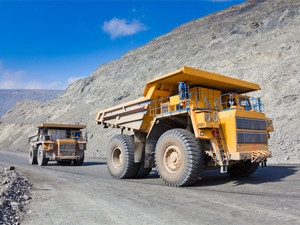
While companies such as Google, Audi and Ford grab headlines with their driverless cars, industrial machinery companies like Caterpillar and Komatsu have deployed some of the first experimental fleets of driverless trucks in Western Australia.
Recent research by Software Advice suggests most people are not comfortable sharing the road with driverless "horse and trailer"-type trucks, despite any potential benefits this technology could have.
The research firm says, due to the high labour costs and dangers associated with operating a mine in this inhospitable terrain, mining and industrial equipment companies have been looking for ways to cut costs while increasing safety - and human drivers have been on the chopping block.
According to the survey, over two-thirds of the respondents said they would feel less safe sharing the road with driverless trucks. It also discovered women were more likely than men to think vehicles piloted by driverless technology would be less safe than vehicles operated by human beings.
Most of the respondents would be uncomfortable with driverless trucks, even if it meant cheaper consumer products or reduced carbon emissions, the survey discovered.
Forrest Burnson, market research associate at Software Advice, says, like other major disruptive technologies, driverless vehicles could (and probably will) fundamentally alter a major aspect of every person's daily life.
"People tend to be scared of new technology until it becomes familiar and commonplace. There is also a tendency among us to believe computers are incapable of performing tasks as well as we can, even though we see all the time that computers can do things better, more efficiently and at a cheaper cost than humans," says Burnson.
He explains, in the limited cases where driverless technology has been used in real-world settings, it has proven to be just as safe - if not safer - than traditional human-operated vehicles.
"A lot of people might simply not be aware of how complex and developed the technology already is. Concerns over driverless technology are certainly warranted - there are many ethical and legal issues surrounding the technology that have yet to be grappled with, and we will certainly struggle with when the time comes to address them."
According to Burnson, most industry predictions say the majority of consumer vehicles will feature fully driverless capabilities within 20 to 30 years. "Until then, we will see smaller advances like assisted parallel parking, and lane assist, etc, make their way into entry-level consumer vehicles. We might see fully autonomous heavy commercial vehicles on the road even sooner."
He also believes the driverless vehicle technology will soon be finding itself in Africa as well. Fully driverless dump trucks are already being used at iron mines in Australia; and given Africa's abundance of natural resources and its sometimes inhospitable climates and terrains, it is possible that certain parts of Africa will see widespread deployment of this technology for industrial use even before the US or Europe do.
"Now, when it comes to consumer vehicles, I think it's a much longer way off. Most nations in Africa tend to have poor road infrastructure, which complicates things quite a bit for driverless cars. And, unfortunately, poverty in Africa might inhibit widespread adoption - for driverless technology to work well, you need to hit a critical mass of users.
"It will take more time for African nations to reach a developmental point economically where its middle class can afford to own cars with driverless capabilities," he concludes.
Share